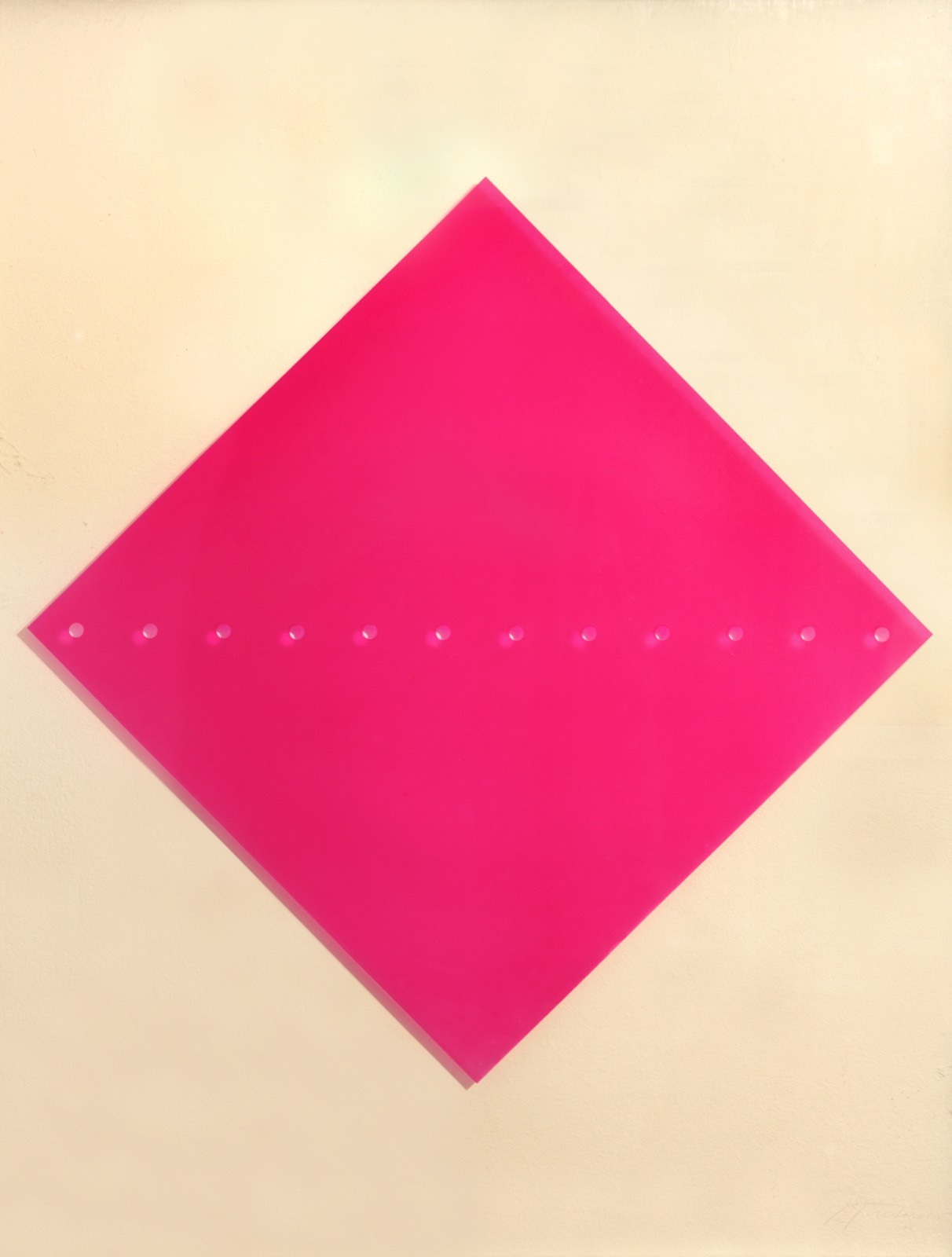Lucio Fontana
Lucio Fontana, the son of Italian sculptor Luigi Fontana, was born in Argentina. He travelled to Italy to study art in 1927. From the outset, he always strove to integrate materiality into space and to give movement a form. He was influenced by the Futurist artists Umberto Boccioni and Giacomo Balla. In 1935, he joined Abstraction-Création, founded by Georges Vantongerloo, with the aim of creating an international stage for abstract art. Fontana returned to Argentina at the outbreak of the Second World War. He founded Spazialismo [Spatialism]: a movement that aimed to permanently disrupt the historical division between painting and sculpture, combining the painterly elements of ‘form’ and ‘colour’ within a spatial context. In 1946, he wrote the first of six ‘Spatialist’ manifestos, attacking aesthetics, formalism and rationalism in art and defending instinctive creation based on space, energy, speed and movement – the key tenets of the Spazialismo movement.
Shortly after the war, Fontana returned to Italy and began his most famous series of works: the Concetto Spaziale [spatial concept] paintings. He punctured and perforated painted canvases with buchi (holes), an innovative rapprochement from two- to three-dimensionality that he would continue to refine. His first tagli (cuts) appeared in 1958: first as several diagonal slashes in close proximity on untreated canvas; later as one clean incision, applied with a single, deliberate and powerful stroke. The underlying deep black void enhanced the spatiality of the works. Fontana experimented with the size and shape of the cuts and holes, as well as with the colour and texture of the canvas, until the end of his career. In his quest to expand his vocabulary, he added unusual materials to his paintings, such as aluminium flakes and glass shards. In the Natura [Nature] series, he applied the cut not to canvas but to convex bronze sculptures.
Trips to Venice and New York in the early 1960s reinvigorated Fontana’s work. He replaced canvas with copper or aluminium, resulting in humorous, sometimes almost kitschy works. The Concetto Spaziale, Teatrino series – canvases with a lacquered frame that adds a third dimension – seems influenced by the early Pop Art of Jasper Johns and Robert Rauschenberg. Fontana continued to expand the boundaries of his artworks. He was one of the first to realise ‘environments’ in the form of rooms filled with neon, TVs and colour projections, among other things, as a way of capturing perception, sound, movement and time in space. Fontana also collaborated with important architects, such as Luciano Baldessari, for whom he designed a neon ceiling for the cinema in a pavilion at the Fiera Milano in 1953.
Fontana paved the way for using (neon) light as an artistic medium, as later used by Bruce Nauman, Dan Flavin and Tracey Emin, for example. The liberating insights of his ‘spatialism’ influenced environmental art and performance art, amongst other things. Fontana’s impact on twentieth-century art cannot be underestimated: as a catalyst of Italian abstract art, as inspirer of informal art and the Zero movement, and as a forerunner of conceptual art. But perhaps the greatest achievement of all was liberating painting from its two-dimensional straitjacket.
















